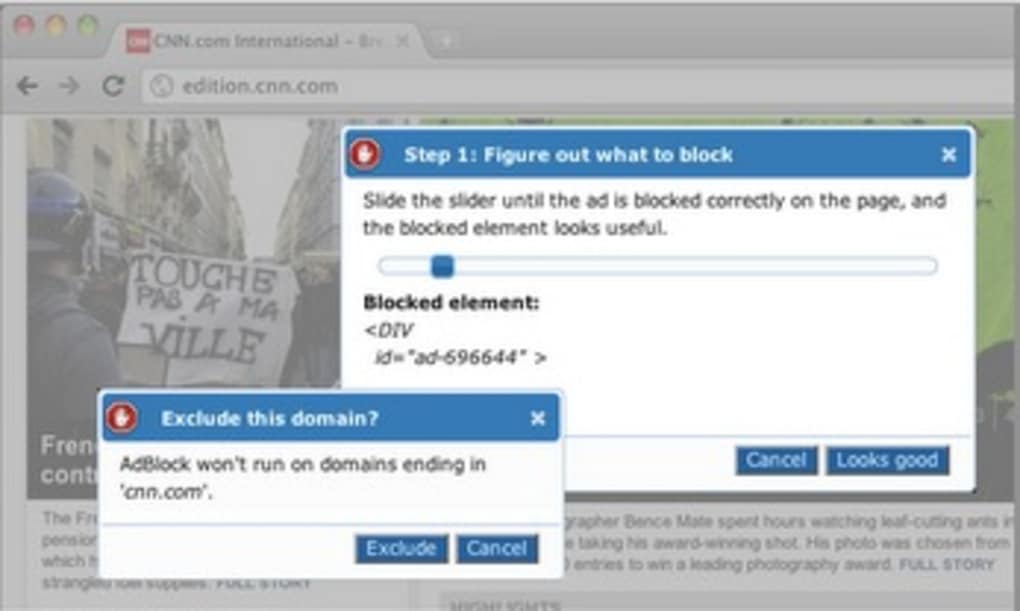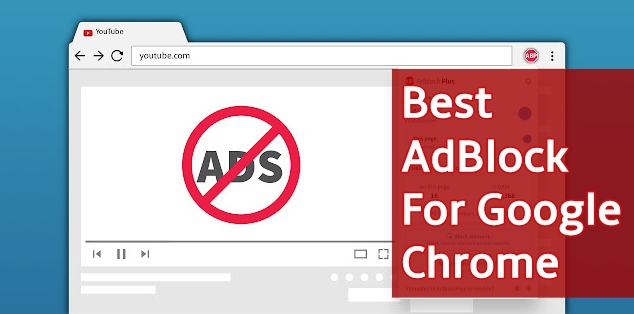
#BEST AD BLOCKER FOR CHROME FREE#
VPNs, the free ones in particular, may carry certain privacy-related risks. The app accomplishes that by using a virtual private network (VPN) profile, which does raise a few hairs. In simpler terms, DNSCloak verifies that there is no tampering with the responses to and from servers that you connect to. It’s a completely free app that offers the ability to thwart DNS spoofing. I was quite lucky to stumble across DNSCloak. But for the most part, it felt refreshing to finally find ads gone from what’s now my favorite browser on iOS. I faced no issues while using the AdGuard DNS servers - they blocked nearly every ad that I came across, except for a few sites where I did encounter a few pop-up tabs. Now it’s time to head over to Chrome, load up any site, and enjoy an ad-free experience. Step 4: Insert the following AdGuard DNS servers into two separate slots, and then tap Save.

Step 3: Tap Manual, and then remove the current DNS servers for your Wi-Fi connection. Step 2: Tap the option labeled Configure DNS. Next, tap the i-shaped symbol next to the connected Wi-Fi network. Step 1: On the iOS Settings app, tap Wi-Fi. The following steps should walk you through the process required to block ads on a Wi-Fi connection. And for those other random networks, I either deal with the ads or use DNSCloak if I find them too annoying.

In my case, I’ve set up the AdGuard DNS servers for my home Wi-Fi connection, as well as on public networks that I frequent to. But as I mentioned earlier, you need to apply it whenever you connect to a new Wi-Fi hotspot - once you’ve configured the DNS servers, the device uses those settings whenever you rejoin the same hotspot. IOS lets you modify the DNS servers for any Wi-Fi connection quite easily. It’s risk-free compared to DNSCloak, which may have unknown security concerns that I’ll mention while we move along. Regardless, I’m not going to forego changing Wi-Fi DNS servers manually. And to my pleasant surprise, it features a built-in AdGuard DNS server profile that you can use to get rid of ads on both Wi-Fi and cellular completely. Looked around even more for an alternative, and stumbled upon an app called DNSCloak that supposedly secures you from DNS spoofing. To circumvent the limitation, I tried using a paid app that claimed to override default DNS settings for cellular data. IOS only lets you configure DNS servers for Wi-Fi connections So then, what about blocking ads while surfing on cellular data?

And even then, you need to do that manually for every Wi-Fi connection that you join - although not repeatedly when rejoining the same hotspot. There’s another problem - iOS only lets you configure DNS servers for Wi-Fi connections. So, don’t be surprised to find out certain apps - such as free-to-play games - failing to work properly due to their inability to serve ads, in which case you have to consider resetting the DNS servers. Setting up AdGuard DNS servers on your iPhone or iPad blocks ads not just on Chrome, but on every other app as well - consider it as something akin to a system-wide adblocker. Just apply the AdGuard DNS to your internet connection, and you end up filtering IP addresses and trackers related to major ad serving platformsīut there’s a catch. Pretty cool, huh? And if you were wondering, AdGuard is very open to you using their DNS servers, so it’s not as if you are doing anything wrong. It requires nothing overly technical - set up the AdGuard DNS with your internet connection, and you end up filtering IP addresses and trackers related to major ad serving platforms. Yes, almost all the extensions available on the chrome web store for the desktop version of Chrome can be installed on Kiwi as well.My workaround involves using the domain name system (DNS) servers of a popular ad blocking service called AdGuard.

However, the most defining feature of Kiwi is support for Chrome extensions. Tapping on it brings the browser down towards the bottom half of the screen, so you can reach the top of a website easily. Therefore, Kiwi only blocks the annoying intrusive ads.Īmongst its feature lists is the ability to bring the toolbar towards the bottom and a handy reachability toggle identified by the hand sign on the toolbar. Ads can also be good, informative, and useful. Ads are important for websites to make a profit and continue to do what they do. Kiwi has a built-in ad blocker that blocks some ads but allows certain others. It still runs on the same base as Chrome, however. These days the browser looks slightly more different than Chrome. Kiwi Browser started as a Chrome alternative on Android, with the goal of being Chrome on steroids.


 0 kommentar(er)
0 kommentar(er)
